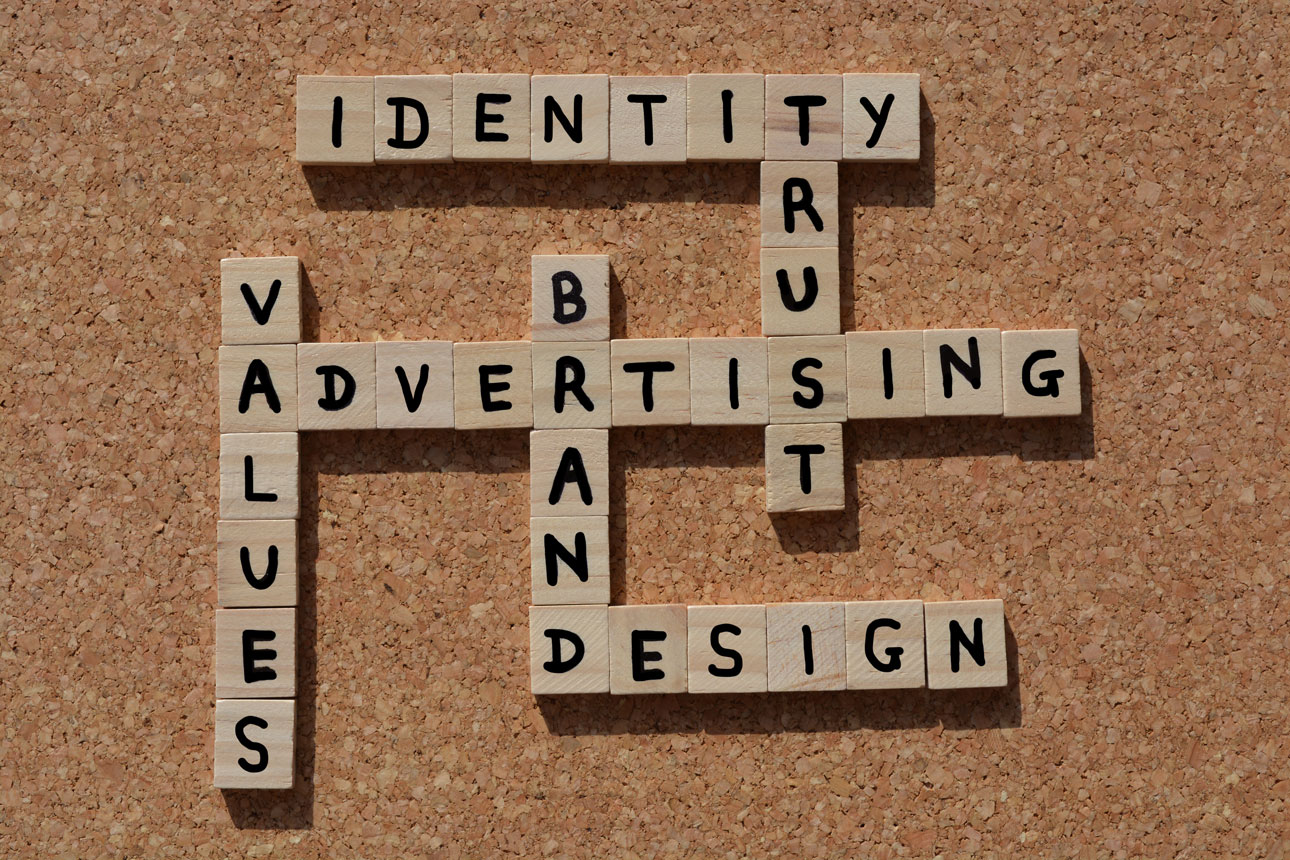Aligning your brand identity with customer perception is not just about creating a pretty logo or choosing catchy taglines. It’s about crafting an emotional experience that resonates with your target audience and drives long-term loyalty.
Brand identity, the way your brand is perceived, is the sum of your visual and verbal elements working together to convey the essence of who you are.
Here’s a breakdown of aligning your visual and verbal identity with customer expectations and emotions to build a brand that stands out and builds lasting connections.

Logo: The Face of Your Brand
Your logo is the most recognizable element of your brand. It’s the visual shorthand for everything your brand stands for. To align with customer perception, your logo must evoke emotions and communicate your brand’s essence.
The Theory: Logos as Emotional Anchors
- Semiotics: Logos act as symbols that carry meaning. They communicate complex ideas and emotions in simple visual forms. A well-designed logo doesn’t just identify your brand—it invokes a feeling that customers associate with your values and personality.
- Color Psychology: Different colors evoke different emotions. A red logo may convey passion, energy, or urgency, while a blue logo may suggest trust, stability, and professionalism.
Advanced Insights:
- Simplicity is Key. Simple logos are easier for customers to remember and recognize. Think about brands like Nike, Apple, and McDonald’s. Their iconic logos distill their brand identity into a clean, recognizable mark.
- Adaptability: Your logo must function across different mediums—digital, print, social media, etc. A brand like Spotify uses a simple, adaptable design that is consistent, whether it’s on an app icon or a billboard.
Logo Redesign: AirBnB
- Airbnb’s logo redesign in 2014 was more than just a facelift. The new Bélo symbol was designed to reflect belonging—the feeling Airbnb wanted to evoke in customers. The logo’s simplicity and bold color symbolized connection, openness, and community, aligning perfectly with Airbnb’s redefined brand positioning.
Actionable Steps:
- Test Your Logo: Use A/B testing to gather feedback from your target audience on how they perceive your logo. Does it evoke the emotions and values you want to communicate?
- Focus on Timelessness: Design a logo that remains relevant over time. Avoid trendy designs that may feel outdated in a few years.
Color Palettes: The Psychology of Color
Color plays a vital role in shaping how customers feel about your brand. The right color palette can create immediate emotional responses and reinforce brand messaging.
The Theory: Color Psychology and Cultural Context
- Color Psychology: Each color triggers specific emotional responses. Yellow is associated with optimism and warmth, while black communicates elegance and sophistication.
- Cultural Sensitivity: Colors have different meanings across cultures. White may signify purity in some cultures, but it represents mourning in others. Brands operating globally need to understand these cultural nuances to avoid missteps.
Importance of color:
- Color Consistency: Consistent use of color across all touchpoints—website, social media, packaging—strengthens brand recognition. Coca-Cola’s consistent use of red reinforces its identity as an iconic and energetic brand.
- Emotional Alignment: Choose colors that align with the emotions you want customers to feel when interacting with your brand. A wellness brand may opt for calming green and blue tones, while a tech brand may use vibrant orange or purple to symbolize innovation.
Color Palette Evolution: Starbucks
 Starbucks’ use of green isn’t just about aesthetics—it’s intentional. Green evokes calmness, sustainability, and growth, aligning with its
Starbucks’ use of green isn’t just about aesthetics—it’s intentional. Green evokes calmness, sustainability, and growth, aligning with its
commitment to environmental responsibility and its role as a welcoming “third place” between home and work.
Tips:
- Create a Color Guide: Develop a brand style guide that defines your color palette, including hex codes for digital media and CMYK for print. Consistency is crucial to maintaining your brand’s identity.
- Test Emotional Response: Show your target audience different color variations and gauge their emotional response. Ensure your colors match the desired brand perception.


Typography: The Subtle Shaper of Brand Perception
Typography may seem simple, but it significantly impacts how people see your brand. The fonts you choose aren’t just about making words look good—they also tell a story about your brand’s personality and values.
How Typography Shapes Perception
- Visual Personality: Different fonts create different impressions:
- Serif fonts (like Times New Roman) feel classic, reliable, and formal.
- Sans-serif fonts (like Helvetica) feel modern, clean, and approachable.
- Decorative fonts are bold and unique but should be used carefully to avoid overwhelming the message.
- Emotional Weight of Fonts: Fonts, like colors, evoke emotional responses. A playful, rounded font may make your brand feel more approachable, while a sharp, angular font can suggest professionalism and authority. For example, Coca-Cola’s cursive typography evokes nostalgia, comfort, and a sense of legacy, reinforcing its status as a timeless brand.
Why Typography Matters for Branding
- First Impressions: The font you use in your logo, website, or ads is often the first thing people see, shaping their first impression of your brand.
- Consistency: Using the same typography across all brand materials (website, emails, packaging) creates a unified look, making your brand more recognizable.
Real-World Example: Google
- When Google updated its logo with the simple Product Sans font, it gave the brand a fresh, modern look that fit its identity as a forward-thinking tech company.
Actionable Tips:
- Pick Fonts that Match Your Brand: If your brand is playful, go for modern, fun fonts. If it’s more traditional, choose something classic and professional.
- Test for Readability: Make sure your font is easy to read, especially on mobile devices and across different formats.
Tone of Voice: The Emotional Connector Between Brand and Audience
Your brand’s tone of voice is the verbal counterpart to your visual identity. It’s how your brand speaks to your audience and plays a major role in shaping how customers feel about your brand. Unlike visual elements, which stay fairly constant, your tone of voice can shift depending on the context while maintaining an underlying consistency.
Why Tone of Voice Matters
- Creating a Personality: Your brand’s personality comes through in words through your tone of voice. Whether quirky, professional, or friendly, your tone should resonate with your audience’s emotions and expectations.
- Building Trust and Familiarity: A consistent tone of voice across all platforms creates familiarity and trust. Over time, customers will begin to recognize and respond to your unique brand voice.
The tone of Voice in Action: Slack’s Conversational Approach
- Slack uses a conversational and approachable tone that makes technical collaboration less intimidating. Slack’s playful voice is well-suited to its mission to make communication more accessible and enjoyable, differentiating it from more formal competitors like Microsoft Teams.
How to Develop Your Tone of Voice:
- Know Your Audience: Your tone of voice should reflect how your audience wants to be spoken to. A young, dynamic audience might prefer casual, playful language, while a B2B audience might expect a more formal, authoritative tone.
- Contextual Flexibility: Adapt your tone to the platform. For example, social media posts can be more informal and engaging, while whitepapers or formal documents should maintain a more professional tone.

Messaging: Crafting a Brand Story That Resonates
Messaging is the narrative that carries your brand’s voice across different platforms and touchpoints. It is how you articulate your brand’s core values, its value proposition, and why customers should care. Effective messaging isn’t just about what you say but how you say it.
The Importance of Consistent Messaging
- Reinforcing Your Brand Identity: Every communication piece—whether a tweet or a product description—should reinforce the same brand story. If your messaging is inconsistent, customers may feel disconnected or confused about what your brand stands for.
- Telling a Compelling Story: Today’s consumers are likelier to engage with authentic brands. Messaging needs to move beyond product features to focus on how your brand fits into the customer’s life.
Storytelling in Messaging: Apple’s Simplicity and Innovation
- Apple tells a consistent story of innovation, simplicity, and empowerment. Whether launching a new product or promoting the brand itself, Apple’s messaging doesn’t focus on features—it focuses on the emotional experience its products enable, like creating, learning, or connecting with others.
How to Master Brand Messaging:
- Define Core Messaging Pillars: Develop 3-5 key messages that consistently represent your brand’s value. These should address not only what you offer but also why it matters.
- Humanize Your Brand: Customers don’t want to be talked at—they want to feel engaged. Use conversational messaging that resonates on an emotional level. Whether through storytelling, customer testimonials, or brand anecdotes, humanizing your messaging makes your brand more relatable and trustworthy.



